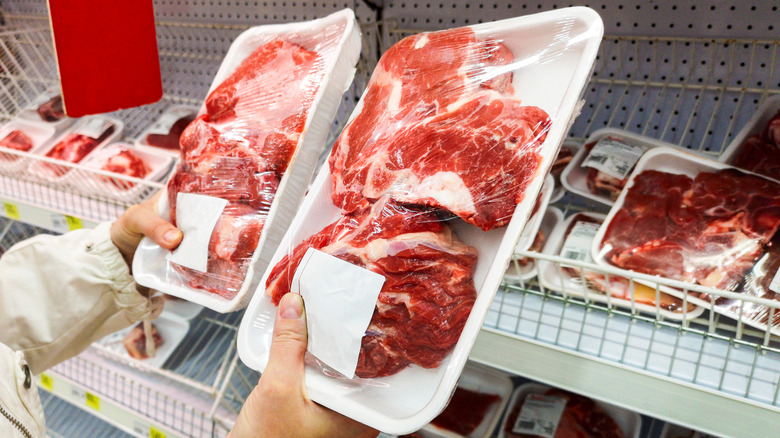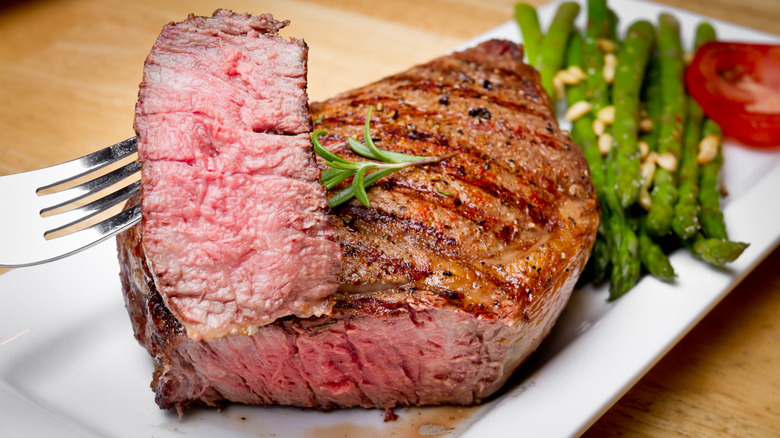The Golden Rule To Follow When Buying Steaks In Bulk
There is a golden rule to follow when buying steaks in bulk. It doesn't have to do with the weight of the package, nor is it in regard to the type of cut or specific breed of cattle. It's not that those things aren't important, but when you are buying steaks in bulk you really need to look for one thing: that they're all the same thickness.
There are a few important reasons behind the logic. First, if you're cooking for a crowd, you don't want to unintentionally short anybody because there was a thinner steak in the package. Second, and more importantly, the steaks need to be the same thickness so that they all cook evenly. Naturally, a thinner piece of meat is going to cook faster than a thicker one. If they're all the same, you won't have to worry about this. Uniform thickness means uniform cooking.
This doesn't necessarily mean that you need to break open the package and measure each cut with a ruler. However, you do need to know what you're looking for. Industry standards dictate a certain thickness for most types of steaks. By knowing those, and a few other tricks, you'll be able to judge whether or not all your steaks are the thickness you need them to be.
How to determine uniform thickness
Depending on the cut, the best thickness for a premium steak is about an inch and a half. However, nearly all of what is sold at grocery stores is only 1 inch thick. This is the minimum thickness you want for the bigger steaks like ribeyes, sirloins, New York strips, and porterhouses. Flank and skirt steaks are on the thinner side, with the latter measuring in at about ½ an inch thick. These will cook up a lot faster than the thicker steaks; keep an eye on them once they hit the heat so as not to overcook them.
Obviously the steaks won't be even down to the millimeter, but they will be close enough that the naked eye won't be able to tell the difference. The naked eye should, however, be able to see the difference between a steak that is 1 inch or 1½ inches thick. A quick look will help you decipher whether or not all of the steaks in the package are the same. If you have access to a local butcher, things are even easier. You can ask them to cut your steaks to the thickness you prefer. So, whether you are cooking for a crowd or just want to have a few steaks made up for your work lunches for the week, making sure you're getting cuts that are all the same thickness will make preparation much easier.

